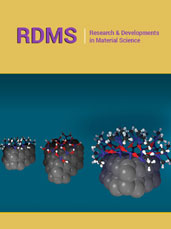- Submissions

Full Text
Advancements in Civil Engineering & Technology
Application of Machine Learning in Civil Engineering: Review
Dungar Singh*
L N Malviya Infra. Project. Pvt. Ltd., India
*Corresponding author:Dungar Singh, L N Malviya Infra. Project. Pvt. Ltd., India
Submission: September 24, 2024;Published: October 22, 2024

ISSN: 2639-0574 Volume6 Issue3
Abstract
The application of machine learning (ML) in civil engineering has experienced rapid growth, primarily due to advancements in data collection, computational power and algorithmic development. This review explores various applications of ML in civil engineering fields, including structural health monitoring (SHM), construction management, geotechnical engineering, transportation systems, and water resources. By providing case studies and identifying challenges, this article underscores ML’s transformative potential in optimizing design, predicting failures, and improving project management.
Introduction
Civil engineering is a vital field that focuses on the design, construction and maintenance of key infrastructure such as buildings, bridges, roads, dams, and tunnels, which form the backbone of modern societies [1]. These structures enable essential services, including transportation, housing, and water supply, making civil engineering crucial to the functioning and development of urban and rural areas. The discipline is broad, encompassing several specialized subfields, each addressing specific infrastructure needs and challenges. Structural engineering focuses on ensuring the stability and safety of buildings and bridges under various loads, while geotechnical engineering deals with soil and rock mechanics, determining how foundations and earthworks interact with the environment [2]. Transportation engineering is concerned with the planning, design and operation of transportation systems, optimizing the movement of people and goods [3]. Environmental engineering focuses on sustainable practices, including waste management, water treatment and pollution control, addressing the environmental impacts of infrastructure projects. Together, these subfields contribute to the creation and maintenance of infrastructure that supports modern life. Traditionally, civil engineers relied on empirical formulas, field experience, and deterministic models, but advances in technology, particularly in data-driven methods like machine learning, are revolutionizing how engineers approach design and problem-solving in this field.
Machine Learning Application
Structural engineering Structural health monitoring
ML is extensively used in SHM for civil infrastructure. The integration of sensors into structures like bridges and buildings generates continuous data streams. By applying algorithms such as support vector machines (SVM), decision trees, and deep learning models, engineers can predict failures or damage. A study showed that Convolutional Neural Networks (CNNs) successfully identified cracks and corrosion from image datasets, providing an efficient and accurate approach to real-time structural health evaluation [4].
Load prediction and optimization
ML also aids in predicting the load-carrying capacity of structures under dynamic conditions. Reinforcement Learning (RL) methods have been applied to optimize designs by simulating different load conditions, improving structural efficiency, and minimizing the reliance on finite element analysis [4].
Construction management Project management and cost estimation
ML techniques are utilized to estimate costs, predict project timelines, and manage risks. A combination of regression models and neural networks is often used to analyze historical project data, leading to more accurate predictions of construction costs and schedules. One research project applied ML algorithms to past project data and significantly improved the accuracy of cost estimation compared to traditional methods [5-6].
Safety management
Construction site safety is another area benefiting from ML. Computer vision systems combined with ML algorithms can detect unsafe conditions, such as workers not wearing helmets or entering restricted areas. These systems analyze live video footage and alert site managers to potential hazards in real-time .
Geotechnical engineering Soil classification and behavior prediction
Accurate soil classification is crucial in geotechnical engineering. ML methods, such as Decision Trees and Support Vector Machines, have been employed to classify soils based on their mechanical properties. This approach reduces the reliance on traditional, timeconsuming lab tests. Additionally, ML has been applied to predict the behavior of soils under different loading conditions, helping engineers better understand the potential risks of foundation failures [7-8].
Slope stability and landslide prediction
ML techniques are widely used in predicting slope stability and landslides, a critical issue in geotechnical engineering. By processing large datasets, such as rainfall records, slope geometry, and soil properties, ML models can predict the likelihood of slope failures and landslides. One study highlighted the use of artificial neural networks (ANNs) in landslide prediction, demonstrating a significant improvement over traditional statistical methods [9].
Transportation systems Traffic flow prediction and management
Transportation systems are complex and ML models have proven valuable in managing traffic flow and predicting congestion. With data from traffic sensors, GPS and other sources, ML algorithms such as k-nearest neighbors (KNN) and recurrent neural networks (RNN) have been applied to forecast traffic patterns and optimize traffic signal control. These models help reduce delays and improve traffic flow in urban areas [10].
Pavement condition monitoring
ML models are employed for monitoring the condition of road surfaces. Using image data and algorithms like CNNs, defects such as cracks and potholes can be automatically identified and classified, providing insights into when maintenance should be performed. This automation reduces the costs and time associated with manual surveys [11].
Water resources and environmental engineering Flood prediction and management
ML models have shown high accuracy in predicting floods by analyzing meteorological and hydrological data. Recurrent neural networks (RNN) and long short-term memory (LSTM) networks have been applied to time-series data, such as rainfall patterns and river flow, to predict floods in real time. These predictions enable better preparedness and disaster mitigation strategies [12].
Water quality monitoring
Monitoring water quality in rivers, lakes and reservoirs is another application of ML. By analyzing environmental data and historical records, ML models can predict changes in water quality parameters, such as turbidity or contamination levels. Early warnings can be issued to prevent negative impacts on public health [13].
Challenges and Limitations
Despite the promising applications of ML in civil engineering,
several challenges remain:
A. Data Availability: ML requires large amounts of data for
training. However, data in civil engineering is often scarce,
incomplete, or inconsistent, which can limit the performance
and reliability of ML models.
B. Model Interpretability: Many ML models, particularly
deep learning methods, function as black boxes, where the
decision-making processes are not easily understandable. This
lack of transparency can be a significant limitation, especially
in structural engineering, where engineers need clear
explanations to verify and trust the models’ outcomes.
C. Integration with Traditional Methods: Civil engineering
has traditionally relied on deterministic models based on wellestablished
physical laws. Integrating ML, which often relies
on probabilistic methods, requires a shift in mindset and a reevaluation
of how traditional models are used.
D. Scalability: While ML models may perform well in
controlled or small-scale environments, scaling them up to
real-world applications can be challenging. Civil engineering
projects often involve large datasets and complex systems, such
as entire transportation networks or city-wide infrastructure
monitoring. Ensuring that ML models can process this scale of
data effectively requires substantial computational resources
and robust infrastructure [14].
Future Prospects
The future of ML in civil engineering holds exciting prospects,
such as:
a) Autonomous Construction: Combining ML with robotics
could lead to fully autonomous construction processes,
significantly reducing human intervention and improving
efficiency.
b) Smart Infrastructure: ML is key to the development of
smart infrastructure that adapts to changing environmental
conditions, such as smart roads that optimize traffic flow or
buildings that self-monitor their structural health.
c) Digital Twins: Digital twins, virtual models that mimic
real-world infrastructure, could integrate ML to continuously
update based on real-time data, enhancing the accuracy of
predictive maintenance.
Conclusion
ML holds tremendous potential in civil engineering, offering significant improvements in design efficiency, safety, and infrastructure monitoring. By leveraging large datasets and advanced algorithms, ML can automate complex decision-making processes, predict structural behaviors and optimize resource allocation. This can lead to more innovative, cost-effective, and sustainable infrastructure designs. In particular, ML enhances safety by detecting early signs of structural failures, optimizing traffic systems, and improving construction site management through real-time data analysis.
However, there are notable challenges to overcome, including the scarcity of high-quality data in some civil engineering domains and the “black box” nature of many ML models, which makes it difficult for engineers to interpret and trust the results. Despite these hurdles, ongoing advancements in ML algorithms and computational power are expanding its applicability, enabling more sophisticated analysis and predictive capabilities. As the field continues to evolve, civil engineers are increasingly adopting ML to tackle some of the most critical issues in infrastructure development, such as managing aging infrastructure, minimizing environmental impacts, and improving resilience to natural disasters. By embracing ML technologies, the civil engineering industry can meet the growing demands of modern infrastructure management and development.
References
- Shahabian F, Abdallah M, Adeli A (2020) Machine learning applications in civil engineering: Review and critical assessment. Engineering Structures 196.
- Rajasekaran S (2021) Artificial intelligence and civil engineering: State of the art and perspectives. Journal of Civil Engineering and Management 26(1).
- Wei J, Jin M (2020) Image-based structural health monitoring using deep learning techniques. Computers and Structures 238: 106283.
- Araya D, Haydari R (2021) Load optimization in civil structures through reinforcement learning. Journal of Structural Engineering 147(3).
- Reza A, Singh P (2021) Machine learning approaches for cost estimation in construction projects. Construction Management and Economics 39(6): 545-559.
- Alam S, Das R (2021) Real-time safety monitoring in construction using computer vision and machine learning. Automation in Construction 129.
- Zhang X (2020) Application of decision trees in geotechnical soil classification. Geotechnical Engineering Journal 56(4).
- Mishra T, Gupta K (2021) Predicting soil behavior with machine learning methods. International Journal of Geotechnical Engineering 13(5).
- Sharma A (2022) Landslide prediction using artificial neural networks. Natural Hazards Review 23(2).
- Yang C, Zhang L (2020) Predicting traffic flow using machine learning techniques. Transportation Research Record 2672(47).
- Krishnan S (2021) Pavement condition monitoring using convolutional neural networks. Journal of Transportation Engineering 145(4).
- Wang H (2021) Flood prediction with recurrent neural networks and long short-term memory. Hydrological Sciences Journal 66(5).
- Zhang Y (2021) Water quality monitoring with machine learning models. Environmental Monitoring and Assessment 193(8).
- Singh L, Gupta N (2020) Data scarcity in civil engineering and its impact on machine learning applications. Civil Engineering Journal 34(2).
© 2024 Dungar Singh. This is an open access article distributed under the terms of the Creative Commons Attribution License , which permits unrestricted use, distribution, and build upon your work non-commercially.
 a Creative Commons Attribution 4.0 International License. Based on a work at www.crimsonpublishers.com.
Best viewed in
a Creative Commons Attribution 4.0 International License. Based on a work at www.crimsonpublishers.com.
Best viewed in 







.jpg)






























 Editorial Board Registrations
Editorial Board Registrations Submit your Article
Submit your Article Refer a Friend
Refer a Friend Advertise With Us
Advertise With Us
.jpg)






.jpg)














.bmp)
.jpg)
.png)
.jpg)










.jpg)






.png)

.png)



.png)






